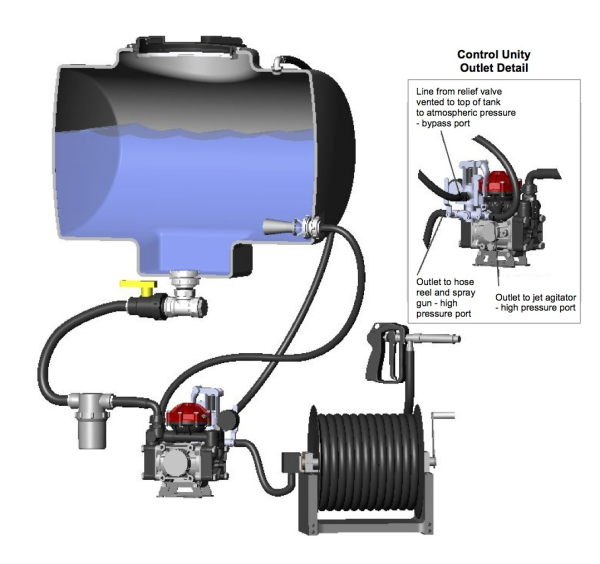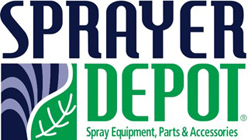The primary goal when you’re plumbing a sprayer pump is to route liquid from the pump to the spray nozzle with as little restriction as possible. By minimizing restrictions you’ll achieve the pump’s maximum rated capacity. For purposes of this blog post we’ll share how to plumb your sprayer the right way when using a diaphragm pump.
Quick side note, as you probably know the type of pump you use makes a difference when it comes to proper plumbing. Diaphragm, piston and roller pumps are all types of positive displacement pumps, whereas a centrifugal pump is the most common non-positive displacement pump. When you’re looking at positive displacement pumps the output is proportional to speed and independent of pressure, but when we use a centrifugal or non-positive displacement pump the output is influenced by pressure. So needless to say, plumbing on these two types is different.
Now that we’re all on the same page, for the best performance of your sprayer with a diaphragm pump and hose reel, follow these 10 steps and you’ll be well on your way to maximizing pump performance and efficiency:

- Place the outlet fitting in lowest point in the tank.
- Connect a ball valve to the outlet tee (or elbow) so you can turn off the flow in case you need to service the pump or check the line strainer.
- Include a line strainer between the tank and the pump to prevent debris from clogging the pump, relief valve, gun and nozzle.
- Tank outlet fitting, elbow, suction line, and strainer should be one pipe size larger than the suction port of the pump. Suction line should be reinforced, so it does not collapse, but flexible so it absorbs pulsation. Clear suction line helps you see air bubbles if there is air entering the system.
- Although diaphragm pumps prime well, try to position the pump lower than the tank for gravity feed.
- Most diaphragm pumps include a “control unit” consisting of a relief valve, multiple discharge ports with ball valves, and a pressure gauge. It can be mounted on the pump or remote mounted. If a remote mount is used do not put a shutoff valve between the pump and the control unit.
- Connect the relief valve bypass port with an unrestricted line to the top of the tank, venting to atmospheric pressure. Do not put a shutoff valve in this line. Do not connect the bypass line to the agitator. Restrictions may prevent the relief valve from bypassing properly and so causing damage to the pump.
- Connect one of the discharge lines to the agitator(s). You may use a ball valve in this line to throttle the flow.
- Connect one of the discharge lines to the inlet swivel on the hose reel. You may use a ball valve in this line. Do not use hard plumbing when connecting the discharge line to the hose reel swivel.
- Connect the gun.
Additional considerations:
- A minimum number of elbows, fittings, and valves should be used to reduce pressure losses. These should also be sized properly to prevent flow restrictions.
- Hoses should be the same size as the pump’s suction and discharge port. A straight run of 10 times the suction hose diameter is recommended prior to the pump inlet. For example: 1.5” hose diameter = 15” of straight hose.
- An agitation flow rate of 5% of the tank capacity is recommended for most chemicals. A higher rate of 10% is suggested for wettable powders and materials difficult to keep in suspension. See the chart below for common tank sizes.
| Tank Capacity | 5% | 10% |
| 500 gallons | 25 gpm | 50 gpm |
| 750 gallons | 37 gpm | 75 gpm |
| 1000 gallons | 50 gpm | 100 gpm |
- A line strainer should be installed on the discharge side of the pump to protect the nozzles from clogging. Learn more about the various strainers recommended for your style of spraying.
Questions? Give us a call or send us an email.

.png?width=280&name=SameDayShippingGuarantee-New%20(1).png)



